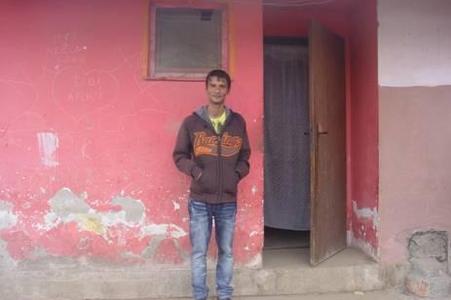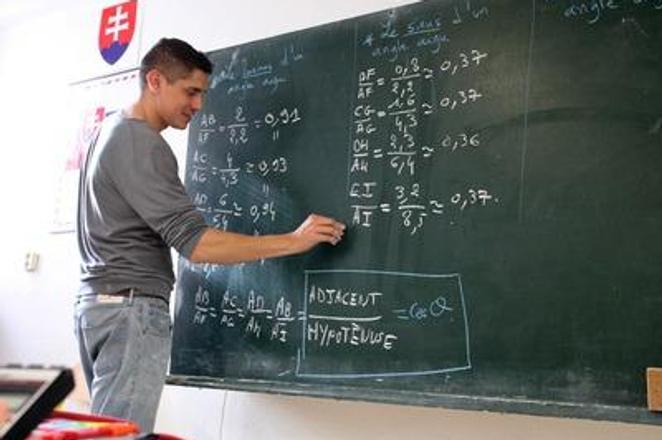“It’s hard to find a job without elementary education and now there are possibilities to be employed if people are educated,” Balogová told The Slovak Spectator, adding that ETP workers inspired her to complete her education.
There were 654 people older than 15 years who joined special course organised for those who have yet to finish their elementary education and decided to do so in 2013/14 school year. When it comes to people over 30, there were 28 people who joined such course, according to Education Ministry.
Though a few program like this exist, the Slovak education system in general is still not prepared, according to ETP Slovakia Director Slavomíra Mačáková.
“It is loss even for schools which complain about lack of students while huge part of Roma youth, mostly from socially disadvantaged environment are uneducated,” Mačáková told The Slovak Spectator.
Adults attend courses
High school and elementary schools organise courses which can be run on daily basis or as external education. School directors set the length of the course based on applicant’s current level of education. The highest possible length of the course is one school year, 10 months, according to Education Ministry.
People who finish those special courses will get a certificate that they have reached lower-middle-level education. However, society still sees those certificates as something worse than secondary school-leaving exams, the “maturita”. This makes them less attractive for students, according to Zuzana Balážová from the Centre for Research of Ethnicity and Culture (CVEK).
There is also possibility to join external course which ends with a maturita, but they cost money. If a person qualifies for state aid they will get a contribution reaching €63.70 per month, she added.
“Considering the fact that state aid receivers face existentional problems we do not see possibility of covering expenses connected with the study [with such sum] as real,” Balážová told The Slovak Spectator, adding that there are high school programs for people dependant on state aid but they are not well-known.
The Education Ministry also runs the project Second Chance for people willing to finish elementary school. For example, in elementary school in Bystrany village, 11 people from 16 who started the course received certificate in the end of 2012/13 school year. They were studying last three elementary schools classes, grades seven to nine, simultaneously.
“The school director said that all 11 students will continue to study at vocational school,” reads the ministry’s statement. “By the way, it was interesting group [of students] because mother, father and daughter met in one class.”
Meeting the students
Anna Jurgovianová is founder of two handicraft-oriented vocational schools in Kežmarok and focused on education and upbringing of pupils from socially disadvantaged environment and marginalised Roma communities.
Students age between 16 and 25. Freshmen are usually elementary school graduates whose siblings already study at one of those two schools. Another group of pupils are people who tried high school but dropped out because of illness or lack of finances, according to Jurgovianová.
Most adults trying to finish their studies did not have possibility to study during their childhood as poverty and the need to help support their family forced them to find a job instead of visiting school, Balážová added.
The number of young people from marginalised communities who attend school and study is increasing in villages where Jurgovianová’s schools or other second-level schools operate because it is more interesting than being at home, she said.
“Basically, young people can meet at school, their time is filled in meaningful way,” Jurgovianová said. “They are also help for the village because their fields of study are focused on auxiliary works.”
Later they are motivated by possibility to get some certificate and find a job. If school succeeds to get those students to maturity class they are usually motivated enough to apply to university, she added.
The language barrier
Milan Hudák, a 31-year-old Roma man living in the Roma settlement outside the town of Moldava nad Bodvou says that in his childhood he was quite a good student, however, everything changed when his father was arrested and went to jail. He left school and began using drugs and stealing iron in order to have money for food and drugs. Later he changed his life and tried to continue his studies, he told The Slovak Spectator.

In order to become a teacher Igor tried to study at grammar school in Košice, but he failed exposing another problem for marginalised Roma - the language. He explained that Roma children in his settlement speak Romani with their parents until they are 6 years old. Then they learn Hungarian during studies at the local elementary school, which uses Hungarian as its main language and teaches Slovak as a foreign language.
“Our education system is totally unprepared for children with different mother tongue,” Elena Gallová Kriglerová from the CVEK told The Slovak Spectator. “Schools have no experience, preparedness or support for educating such students.”
The Education Ministry responses that to deal with language barriers schools organise special language courses and provide individual help to any young person who face failure at school or early leaving of school. Moreover, there are Roma teacher assistants working in schools with a high percentage of Roma children.
Foreign studies say that best option for such children is when part of education is done in their mother tongue and at the same time they are intensively learning the official language of education, according to Kriglerová.
“Teacher assistants can partially compensate the [language] deficit but they are not the only solution,” she said.
How to improve things
Jurgovianová said that the schools she founded have a 45-percent success rate to produce students who are able to find a work and that 6-percent go on to study at university.
“Considering the type of students we work with we are satisfied with results; however, our goals are higher and more challenging,” Jurgovianová said.
However, to improve Slovak education system in general children from disadvantaged environment should start pre-school starting at 3-years-old and then attend integrated regular schools. The system should also work more with parents who also need education and need to understand it’s importance, according to ETP.
“A lot of parents want to complete their education but they lack courage,” Kriglerová said. “If they could participate on education in classes where their children study few times per month they would be gradually encouraged [to do the same].”
ETP also proposes to deal with discrimination of Roma children who are many times forbidden to take their textbooks home and thus unable to practice what they learned. While some projects in Slovakia are successful and marginalised Roma graduate from high school, the overall situation is urgent. Even many of those who graduate from high school are unable to find a work, according to Kriglerová.
“Statistics say that in few years Slovakia will not have enough workers to support pensioners,” Kriglerová said. “Sadly the country is still unable to create conditions for people from marginalised Roma communities to join labour process.”



 (source: Sme )
(source: Sme )